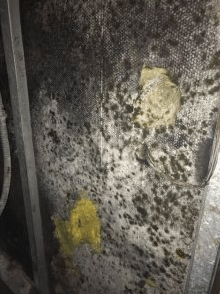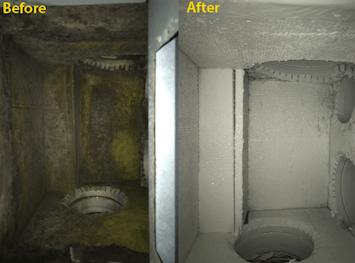MOLD IN AIR DUCTS? HOW CAN MOLD IN THE HVAC SYSTEM AFFECT YOU?
Mold in air ducts grows when the HVAC (Heating, Ventilation, & Air Conditioning) System is not properly cleaned, maintained and monitored. Mold in the HVAC system also grows when there is water damage or high humidity within the home or building.
WHAT ARE THE DANGERS OF MOLD IN AIR DUCTS?
According to the Center for Disease Control and Prevention (CDC), exposure to molds can cause serious symptoms. Such symptoms include nasal stuffiness, eye irritation, wheezing, or skin irritation. Severe reactions include fever and shortness of breath. Some people with chronic lung illnesses, such as obstructive lung disease, may even develop mold infections in their lungs.
This is a subtitle for your new post
Since 1992, DuctMasters has specialized in providing Clean Air Solutions through professional air duct cleaning and decontamination, HVAC mold remediation, antimicrobial duct coating of porous/fiberglass air ducts (see pictures on the right), and more.
As a Certified Mold Remediator with the National Air Duct Cleaners Association (NADCA), our technicians often remediate suspect mold in air ducts and complete air conditioning systems.
In fact, our happy clients include thousands of homeowners and commercial buildings including hotels, schools, police and fire stations, and other facilities to ensure clean indoor air.
We offer a hygiene inspection of your HVAC system and air ducts to improve your indoor air quality.
In 2004, the Institute of Medicine (IOM) found there was sufficient evidence to link indoor exposure to mold with upper respiratory tract symptoms, coughing, and wheezing in otherwise healthy people. These symptoms are worse for those with asthma or immune deficiency disorders. The IOM also found suggestive evidence linking indoor mold exposure and respiratory illness in otherwise healthy children.
Recent studies also suggest a potential link of early mold exposure to development of asthma in some children. Fortunately, improved housing conditions appear to reduce morbidity from asthma and respiratory allergies, but more research is needed in this regard.









